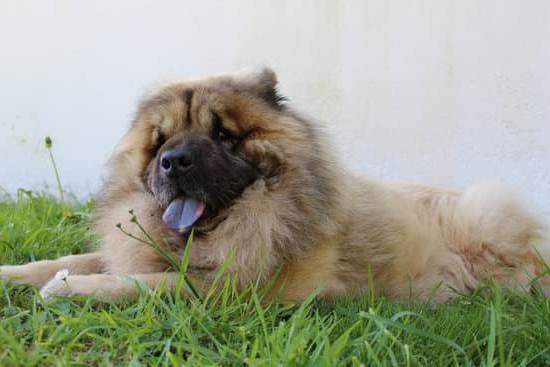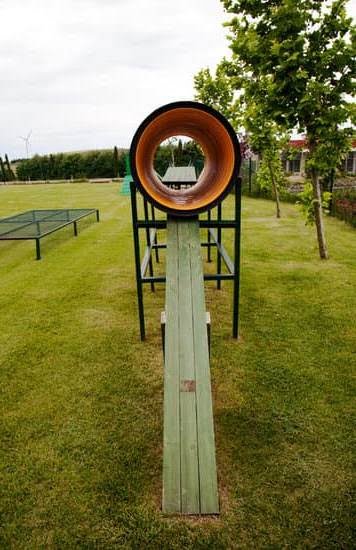In the world of dog training, trick training has gained significant popularity over the years. Not only is it a fun and entertaining activity for both dogs and their owners, but it also offers numerous benefits for a dog’s overall well-being. From enhancing mental stimulation to improving physical fitness and socialization skills, trick training is an excellent way to engage with your furry companion on a deeper level.
Trick training provides dogs with an outlet to express their natural instincts, challenge their cognitive abilities, and strengthen the bond between owner and pet. It can also be a great form of exercise, especially for dogs who may not have access to regular outdoor activities or have limited space. In addition, trick training serves as a platform for building obedience skills and reinforcing positive behaviors.
But how old should a dog be before delving into the world of trick training? While there is no definitive answer, it is important to consider the developmental stages of dogs in order to effectively train them. Puppies require a different approach than adolescent dogs or adult dogs when it comes to introducing tricks and commands. By understanding these stages and tailoring the training accordingly, you can set your furry friend up for success in their trick-training journey.
Throughout this article, we will explore the developmental stages of dogs in relation to trick training. We will discuss specific guidelines for starting at different ages, explore strategies for building a strong foundation with puppies, navigate the challenges of working with adolescent dogs, and understand how to engage and challenge adult dogs. Additionally, we will touch on potential risks and precautions to ensure that your dog’s safety is always prioritized during the training process.
So whether you have a brand new puppy or an older adult dog who could use some mental stimulation, read on to discover how age should not limit your dog’s ability to learn new tricks. Trick training is truly timeless – it’s never too early or too late to start creating a mentally fulfilled and well-rounded furry companion.
Understanding the Developmental Stages of Dogs for Effective Trick Training
When it comes to trick training, understanding the developmental stages of dogs is crucial for effective and successful training. Different ages require different approaches and techniques, as a dog’s capabilities, behavior, and attention span change throughout their development. By tailoring trick training to each stage, owners can maximize their dog’s potential and create a rewarding learning experience.
The first stage of development is puppyhood, which typically lasts until around six months old. During this time, puppies are highly impressionable and eager to learn. Trick training during puppyhood focuses on building a strong foundation by introducing basic commands and simple tricks.
This stage is pivotal for establishing a positive and structured learning environment that will benefit them in the long run. It’s important to note that training sessions should be kept short, as puppies have shorter attention spans.
Adolescence is the next stage in a dog’s development, which usually occurs between six months to two years old. This period can be challenging for both dogs and owners due to hormonal changes and increased independence. Trick training during adolescence requires navigating these challenges with patience and consistency. Training sessions should be fun and engaging to keep them interested but also offer enough mental stimulation to meet their growing energy levels.
Finally, there’s adulthood – the stage where dogs have reached physical maturity, usually around two years old or older depending on the breed. At this point, trick training should focus on engaging their potential by incorporating advanced tricks that challenge them mentally. Adult dogs benefit from continued mental stimulation to prevent boredom or behavioral issues. Keep in mind that while adult dogs can excel in trick training, it may take longer for them to learn compared to younger dogs.
By understanding the developmental stages of dogs and tailoring trick training accordingly, owners can set their furry companions up for success. Each stage presents unique opportunities and challenges that need to be addressed with appropriate techniques and strategies. Remember that training should always be a positive and enjoyable experience for both dogs and owners, fostering a strong bond and creating a mentally fulfilled companion.
General Guidelines for Beginning Trick Training Based on a Dog’s Age
Introduction to General Guidelines for Beginning Trick Training Based on a Dog’s Age
When it comes to trick training, it is important to consider a dog’s age in order to effectively tailor the training process. Just like humans, dogs go through different developmental stages that can influence their ability and readiness for learning new tricks. By understanding these stages and following some general guidelines, owners can ensure that they are providing appropriate training opportunities for their furry companions at each stage of life.
The Importance of Starting Early: Puppyhood
Puppyhood is a critical period for socialization and learning in dogs. As such, it is an ideal time to introduce basic commands and simple tricks. Puppies have a natural curiosity and eagerness to please, making them highly receptive to training during this stage. It is recommended to start trick training as early as 8 weeks old, once the puppy has settled into its new home.
During the early stages of trick training with puppies, it is crucial to focus on building a strong foundation. This includes teaching essential commands such as sit, stay, come, and lie down. These commands serve as the basis for more advanced tricks in the future. The key is to keep training sessions short and positive, using treats or toys as rewards while being consistent with verbal praise and gentle physical cues.
Continuing Education: Adolescent Dogs
Adolescence is another pivotal stage in a dog’s development where hormonal changes can affect behavior and attention span. Trick training during this stage may come with its challenges but remains significant for continued mental stimulation and obedience building.
It is recommended to begin introducing more complex tricks once basic commands are firmly established from puppyhood. Adolescent dogs thrive on mental challenges, so incorporating puzzle toys or shaping exercises into trick training sessions can help maintain engagement and prevent boredom.
Consistency in training methods becomes even more crucial during this stage as dogs may test boundaries and exhibit a certain level of stubbornness. Patience, positive reinforcement, and maintaining a structured training routine are key to navigating the adolescent stage successfully.
Engaging Adult Dogs: A Lifetime of Learning
Trick training is not limited to specific age groups, and adult dogs can also benefit from mental stimulation and continued training. Even though they may not be as easily impressed as puppies or motivated by treats, adult dogs can still learn new tricks by focusing on their individual interests and abilities.
When working with adult dogs, it is important to challenge their potential with more advanced tricks that tap into their natural talents or breed characteristics. For example, agility courses or scent detection exercises can provide physical and mental stimulation while keeping them engaged in the training process. It is essential to adapt the training sessions according to each dog’s energy level and capabilities.
Overall, trick training should be a lifelong journey for dogs of all ages. By following these general guidelines based on a dog’s age, owners can ensure that they provide appropriate and effective trick training opportunities that foster their furry friend’s well-being and promote a strong bond between human and canine companions.
Considerations for Trick Training with Puppies
Completing trick training with a young puppy can be an incredibly rewarding experience for both the owner and the dog. During this stage of their development, puppies are like sponges, absorbing information and learning at a rapid pace. By starting trick training early, owners can build a strong foundation for future training endeavors and foster positive behaviors that will last a lifetime.
Introducing Basic Commands
When beginning trick training with a puppy, it is essential to focus on teaching them basic commands such as “sit,” “stay,” and “come.” These basic commands serve as building blocks for more advanced tricks and help establish a structured learning environment.
It is important to use positive reinforcement techniques like treats or praise when the puppy correctly performs the desired behavior. Consistency is key during this stage, so using the same cues consistently will help the puppy understand what is expected of them.
Creating a Positive Learning Environment
In addition to teaching basic commands, creating a positive learning environment is crucial when trick training a puppy. Patience and consistency are fundamental in achieving success. Keep training sessions short, around 5-10 minutes each, to prevent your puppy from becoming overwhelmed or losing interest.
Use positive reinforcement techniques and reward your puppy with treats, toys, or praise whenever they perform the desired behavior correctly. By focusing on positive reinforcement rather than punishment-based methods, you can ensure that your puppy enjoys the training process and stays motivated to learn.
Building Trust and Bonding
Trick training with puppies not only provides mental stimulation but also helps build trust between the owner and their furry companion. Regular interactions during trick training sessions allow puppies to develop a bond with their owners based on mutual understanding and respect. As you work together towards achieving various tricks, your puppy will gain confidence in their abilities while also strengthening your relationship.
By starting trick training early in their development, owners can ensure that their puppies have a strong foundation in basic commands and enjoy the training process. Building a positive learning environment, introducing basic commands, and fostering trust are key considerations during this stage of training. With consistent effort and patience, owners can lay the groundwork for successful trick training adventures with their puppies.
Special Considerations for Trick Training with Adolescent Dogs
Trick training with adolescent dogs requires special considerations and strategies to navigate the challenges that come with this stage of development. Adolescence is a time when dogs experience significant behavioral and physical changes, which can sometimes pose obstacles in their training journey. However, with the right approach and understanding, it is still possible to have successful trick training sessions with adolescent dogs.
One important consideration during adolescence is the need for consistency and patience. Adolescent dogs are going through a period of heightened curiosity and exploration, which can sometimes lead to distractions or lack of focus during training sessions. It is important for owners to remain patient and consistent in their training efforts, using positive reinforcement techniques and rewards to keep their dog’s attention.
Another consideration is the potential for rebellious behavior or testing of boundaries during adolescence. Dogs may become more independent or challenging during this stage, which can make trick training more difficult. It is crucial for owners to establish themselves as the pack leader through clear communication and assertiveness, ensuring that their dog understands the expectations and boundaries set during training.
To navigate these challenges, here are some strategies that can be effective when trick training adolescent dogs:
- Maintain a structured routine: Establishing a consistent daily routine helps provide stability and routine for adolescent dogs. This structure can support their mental well-being and maintain focus during training sessions.
- Keep commands simple and concise: Adolescents may be easily distracted or overwhelmed by complex commands. It’s best to start with simple tricks that they already know well before gradually introducing more advanced ones.
- Use high-value rewards: Adolescent dogs may require stronger motivation compared to puppies or adult dogs. Utilize high-value treats or toys as incentives during trick training sessions.
- Incorporate socialization opportunities: Adolescence is an ideal time to continue socializing your dog with other animals, people, and various environments while trick training. This exposure helps them build confidence and navigate different situations confidently.
By implementing these strategies and adapting to the particular needs of adolescent dogs, owners can successfully navigate the challenges and continue building on their dog’s trick training skills during this developmental stage. With time, patience, and consistent training efforts, adolescent dogs can still achieve remarkable trick training success.
Tailoring Trick Training to Adult Dogs
Adult dogs can also benefit greatly from trick training. While puppies and adolescent dogs may have more energy and are more easily trainable, adult dogs have the advantage of maturity, focus, and a better understanding of commands. Trick training for adult dogs is an opportunity to engage their potential and challenge them mentally.
One important aspect of trick training for adult dogs is to continue providing mental stimulation. Adult dogs may become bored with repetitive training exercises, so it is important to introduce new and more challenging tricks to keep them engaged. This can involve teaching them more complex commands or combining multiple tricks into sequences.
In addition, incorporating props or obstacles during trick training can provide a new level of mental stimulation for adult dogs. For example, using agility equipment such as tunnels or weave poles can help keep the training sessions interesting and motivate the dog to learn new tricks. These types of challenges not only provide mental stimulation but also help improve a dog’s physical coordination and flexibility.
| Benefits | Data |
|---|---|
| Mental Stimulation | Trick training engages the dog’s brain, promoting mental agility and problem-solving skills. |
| Bonding with Owner | Training sessions create opportunities for positive interactions between the dog and owner. |
| Physical Exercise | Trick training keeps the dog physically active even if they are not able to engage in high-intensity exercise. |
Overall, trick training for adult dogs can be just as rewarding as it is for puppies and adolescent dogs. It provides mental stimulation, strengthens the bond between the dog and its owner, and keeps the dog physically active. By continually challenging adult dogs with new tricks and incorporating props or obstacles, owners can help their furry companions reach their full potential and continue to grow in their abilities.
Potential Risks and Precautions
Trick training is an enjoyable and beneficial activity for dogs of all ages. However, it is important for dog owners to be aware of the potential risks and take precautions to avoid overexertion and injuries during the training process. This section will discuss the importance of monitoring a dog’s physical capabilities and limitations, as well as provide tips for preventing injuries.
Dogs, just like humans, have their own individual limits when it comes to physical exertion. It is crucial for dog owners to recognize these limits and avoid pushing their dogs too hard during trick training. Overexertion can lead to fatigue, muscle strain, or even more serious injuries. Signs of overexertion in dogs may include excessive panting, decreased energy or enthusiasm, stumbling or limping, and reluctance to continue with the training session.
To prevent overexertion and injuries during trick training, dog owners should always start with a warm-up session before introducing new or challenging tricks. Warm-up exercises can include gentle stretches, short walks, or playing with toys to get the dog’s muscles warmed up and ready for physical activity. Additionally, it is important to gradually increase the intensity and duration of training sessions over time, allowing the dog’s muscles to adapt and strengthen gradually.
In addition to monitoring their dog’s physical condition during trick training sessions, owners should also be mindful of the equipment they use. Ensuring that collars or harnesses fit properly and do not cause discomfort or restrict movement is essential. Using positive reinforcement techniques instead of forceful methods will help create a safe and positive learning environment for your furry companion.
It is also worth noting that certain tricks may carry a higher risk of injury depending on a dog’s size, breed characteristics, or pre-existing health conditions. For example, tricks that require high jumps or strenuous movements may not be suitable for small dogs or those prone to joint issues. Owners should consult with a veterinarian if they have any concerns about their dog’s physical abilities or if they need guidance on appropriate trick training activities.
By being attentive to their dog’s physical well-being, setting realistic training goals, and using positive reinforcement techniques, owners can ensure that trick training is a safe and enjoyable experience for their four-legged friends. This will not only prevent injuries but also contribute to a strong bond and a happy, healthy dog.
| Potential Risks and Precautions | Preventing Injuries |
|---|---|
| Recognize the dog’s limits | Start with a warm-up session before training |
| Gradually increase intensity and duration of sessions | Ensure equipment fits properly and doesn’t restrict movement |
| Beware of tricks that may be risky for certain breeds or sizes | Consult with a vet regarding any health concerns or limitations |
Case Studies
One of the remarkable aspects of trick training is that dogs of all ages can excel and achieve impressive results. Whether it’s puppies, adolescent dogs, or adult dogs, each stage of a dog’s life presents unique opportunities for learning and growth. Case studies provide concrete evidence of the amazing potential for dogs to thrive in trick training at different ages.
- Puppy Success Story: Charlie, the 4-Month-Old Labrador Retriever Charlie was just a playful and curious 4-month-old Labrador Retriever when his owner decided to start trick training with him. Despite being in the early stages of development, Charlie quickly grasped basic commands like sit, stay, and lie down. With consistent practice and positive reinforcement, he soon moved on to more advanced tricks such as roll over and shake hands.
By starting early with trick training, Charlie developed a strong foundation that prepared him for more complex tricks as he grew older. He demonstrated an incredible eagerness to learn and please his owner throughout the process. Today, Charlie continues to expand his repertoire of tricks and has become a beloved member of his community due to his impressive performances at local events.
- Adolescent Success Story: Bella, the 1-Year-Old Border Collie Mix Bella’s owner faced unique challenges when beginning trick training with her during adolescence. Like many adolescent dogs, Bella showed signs of rebellious behavior and restlessness. However, her owner remained patient and tailored her trick training sessions to accommodate Bella’s specific needs.
It wasn’t long before Bella began to respond positively to a structured training routine that included mental stimulation exercises alongside trick training sessions. By incorporating activities such as puzzle toys and scent work into her daily routine, Bella’s focus improved significantly during trick training sessions. She surpassed expectations by mastering complex tricks like dancing on hind legs and weaving through agility courses.
- Adult Success Story: Max, the 8-Year-Old Golden Retriever Max’s owner was concerned that trick training might not be suitable for an older dog like him. However, with the right approach and understanding of Max’s capabilities, they discovered that age should never limit a dog’s potential.
Rather than focusing solely on physical tricks, Max’s training sessions included mental exercises and problem-solving activities. They found that engaging Max’s mind was just as important as engaging his body. As a result, Max excelled in learning advanced tricks such as identifying objects by name and even performing simple math calculations.
These case studies highlight the remarkable progress that dogs can achieve at different ages through trick training. From puppies building a strong foundation to adolescents overcoming challenges, and adult dogs finding new ways to stay mentally fulfilled – dogs of all ages benefit from this unique form of training. The key lies in tailoring the training approach to suit each individual dog, recognizing their strengths and limitations, and celebrating their achievements along the way.
Conclusion
Trick training is a valuable tool that can greatly enhance the overall well-being of dogs, regardless of their age. Throughout this article, we have explored the different stages of canine development and provided specific guidelines for trick training at each stage.
From puppies to adolescent dogs and adult dogs, there are strategies and techniques that can be tailored to meet the needs and capabilities of any dog. The key takeaway is that age should never be a limiting factor when it comes to trick training.
By engaging in trick training, dogs receive both mental and physical stimulation, which helps to prevent boredom and destructive behavior. Trick training also strengthens the bond between dog and owner, as they work together towards achieving shared goals. Additionally, trick training offers an opportunity for owners to identify their dog’s unique talents and strengths, allowing them to customize their training approach accordingly.
It is important for owners to create a positive learning environment by utilizing positive reinforcement techniques and setting realistic expectations based on their dog’s age and abilities. By doing so, owners can ensure that trick training remains enjoyable for both themselves and their furry companions.
In conclusion, regardless of whether your dog is a puppy, an adolescent, or an adult, trick training has numerous benefits that can positively impact their mental well-being. Age should not serve as a barrier to engaging in this rewarding activity with your dog.
Embrace the opportunity to enhance your bond with your four-legged friend while providing them with the mental fulfillment they need. Remember that age truly is just a number when it comes to trick training – all dogs have the potential to thrive.
Frequently Asked Questions
Can you still teach a 1 year old dog tricks?
Yes, it is definitely possible to teach a 1-year-old dog tricks. While it is commonly believed that dogs are most receptive to training during their puppyhood, learning doesn’t stop once they reach a year in age.
In fact, many dogs continue to thrive in their ability to learn and retain new commands as they mature. It may require some patience and persistence, but with positive reinforcement and consistent training techniques, teaching tricks to a 1-year-old dog can be fun and rewarding.
How long does it take for a puppy to learn a trick?
The time it takes for a puppy to learn a trick can vary depending on various factors such as the complexity of the trick, the breed of the puppy, and individual temperament. Generally speaking, puppies have a shorter attention span compared to adult dogs, so it might take a bit longer for them to grasp new commands initially.
However, with proper training methods that involve positive reinforcement and short sessions focused on one command at a time, puppies can start acquiring basic tricks within a few weeks or even days if they are quick learners.
Can you teach a 6 month old puppy tricks?
Absolutely! A 6-month-old puppy is still in its vital learning stage and is highly capable of acquiring new tricks through consistent training. At this age, they have developed better motor skills and coordination which makes them more receptive to learning complex commands as well.
Similar to training any young dog, it’s important to use positive reinforcement techniques like treats or praise to motivate the puppy and make the learning experience enjoyable for both of you. With regular practice and patience, teaching tricks to a 6-month-old puppy can be an enriching experience that strengthens your bond with them while also stimulating their mental abilities.

Welcome to the blog! I am a professional dog trainer and have been working with dogs for many years. In this blog, I will be discussing various topics related to dog training, including tips, tricks, and advice. I hope you find this information helpful and informative. Thanks for reading!





